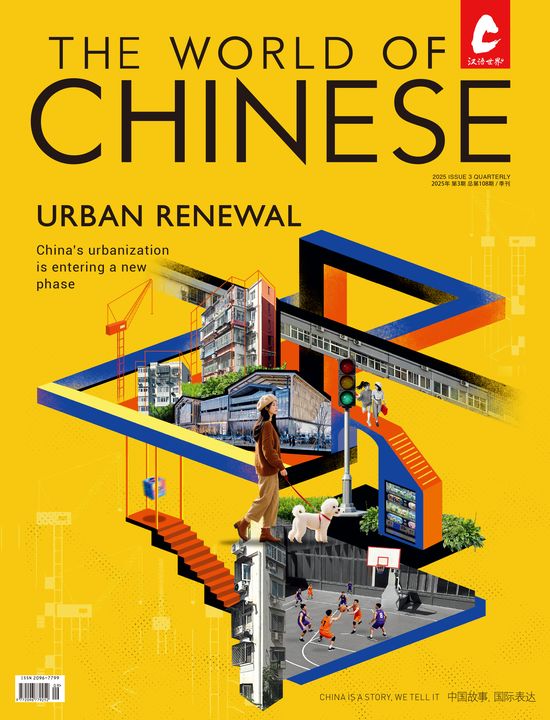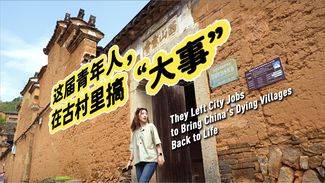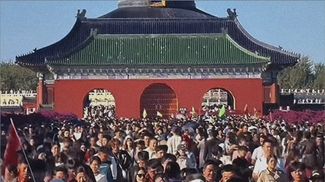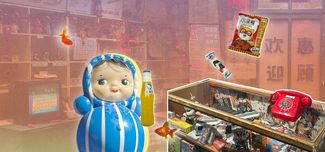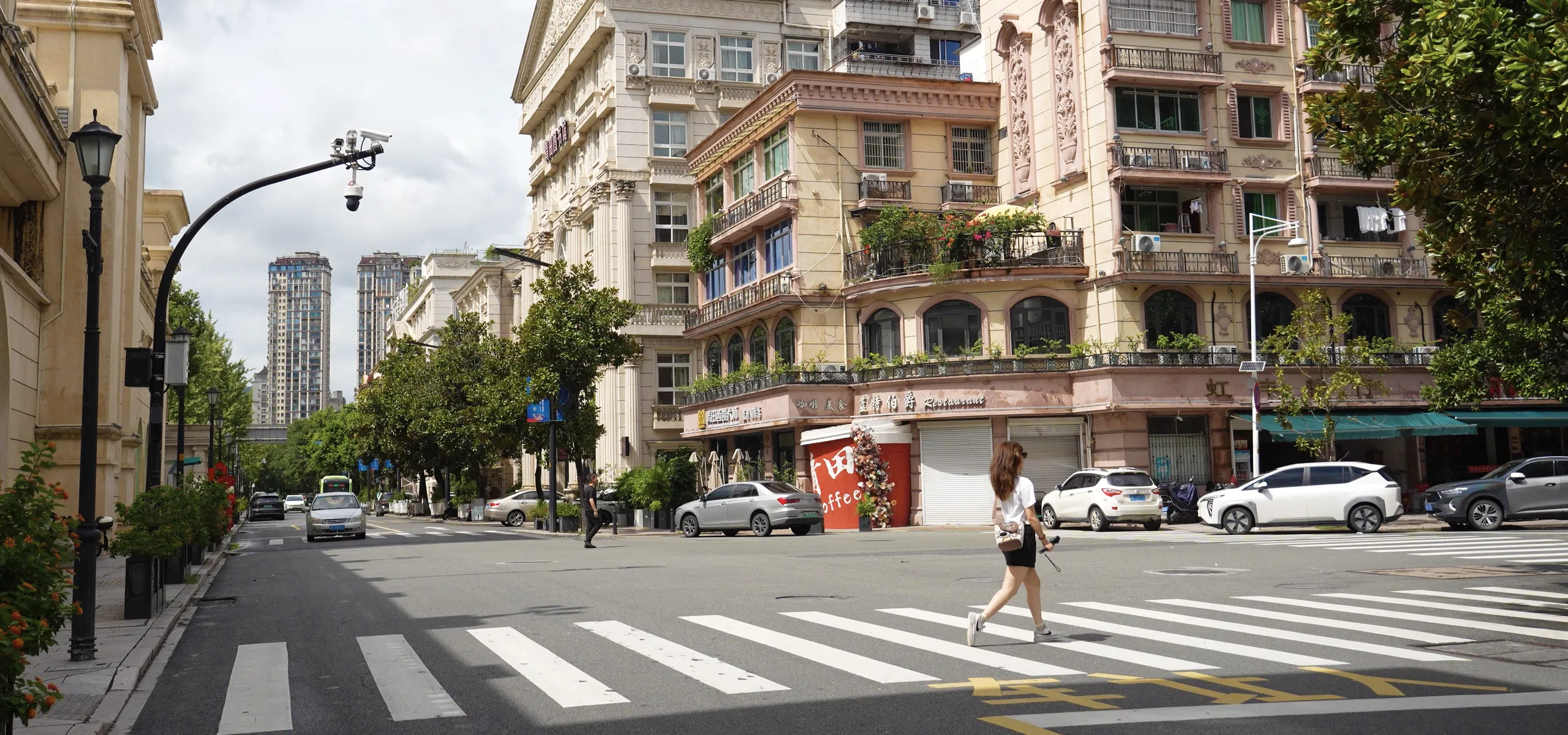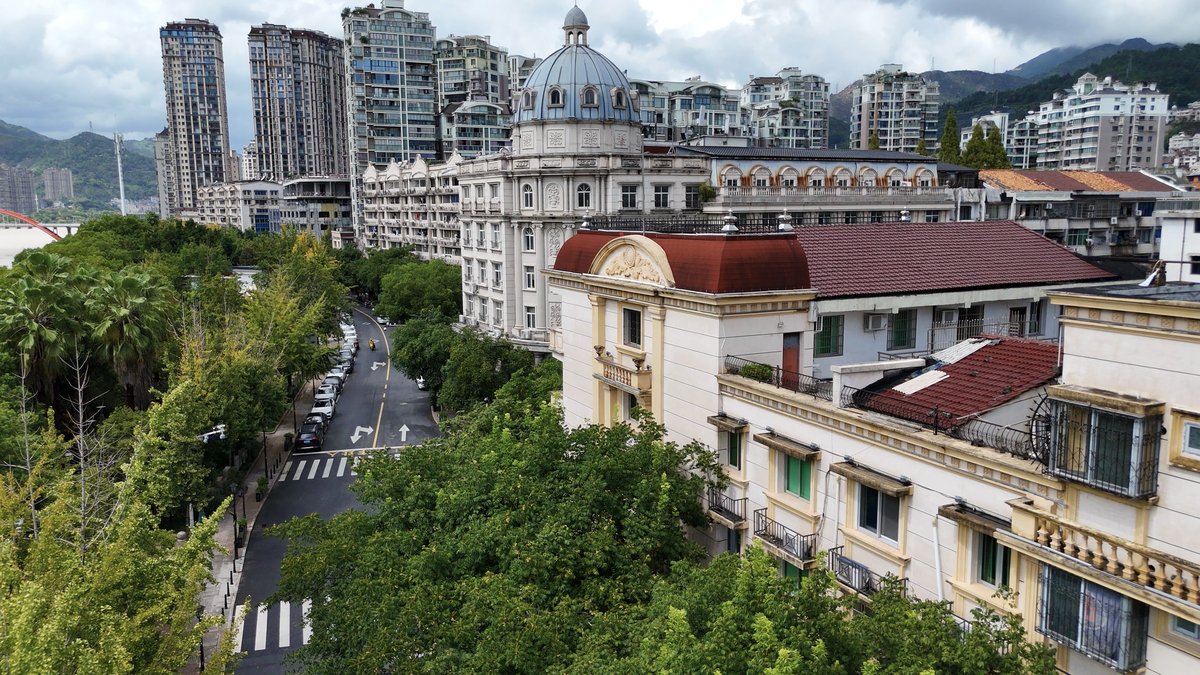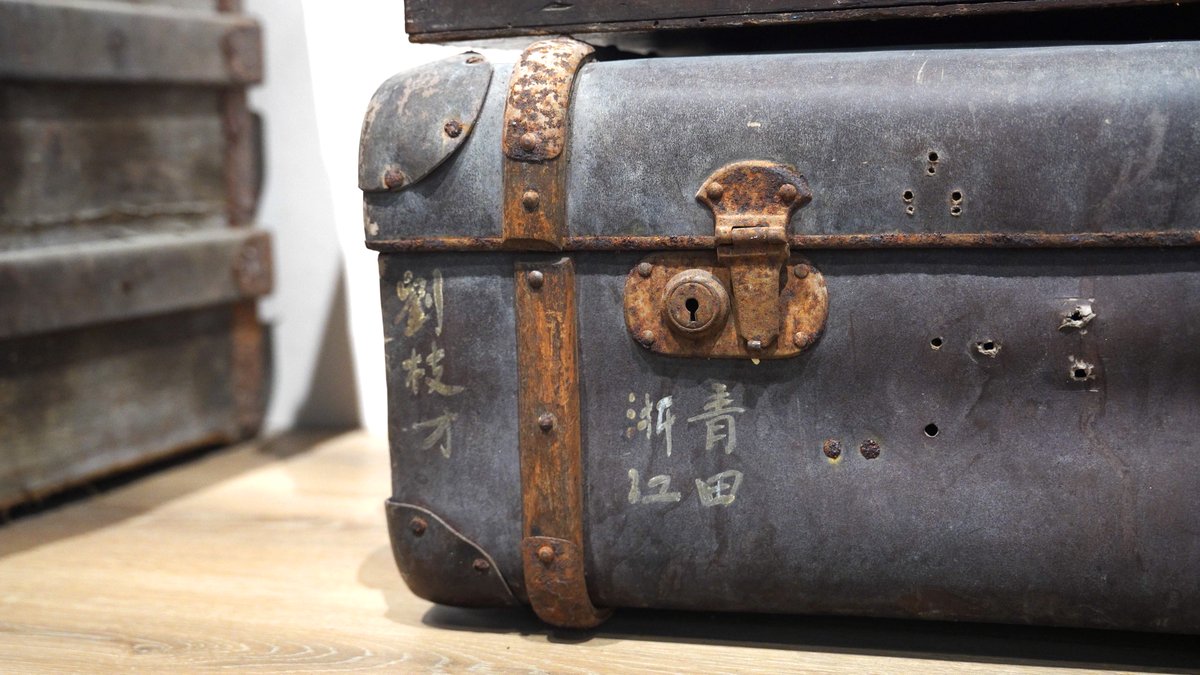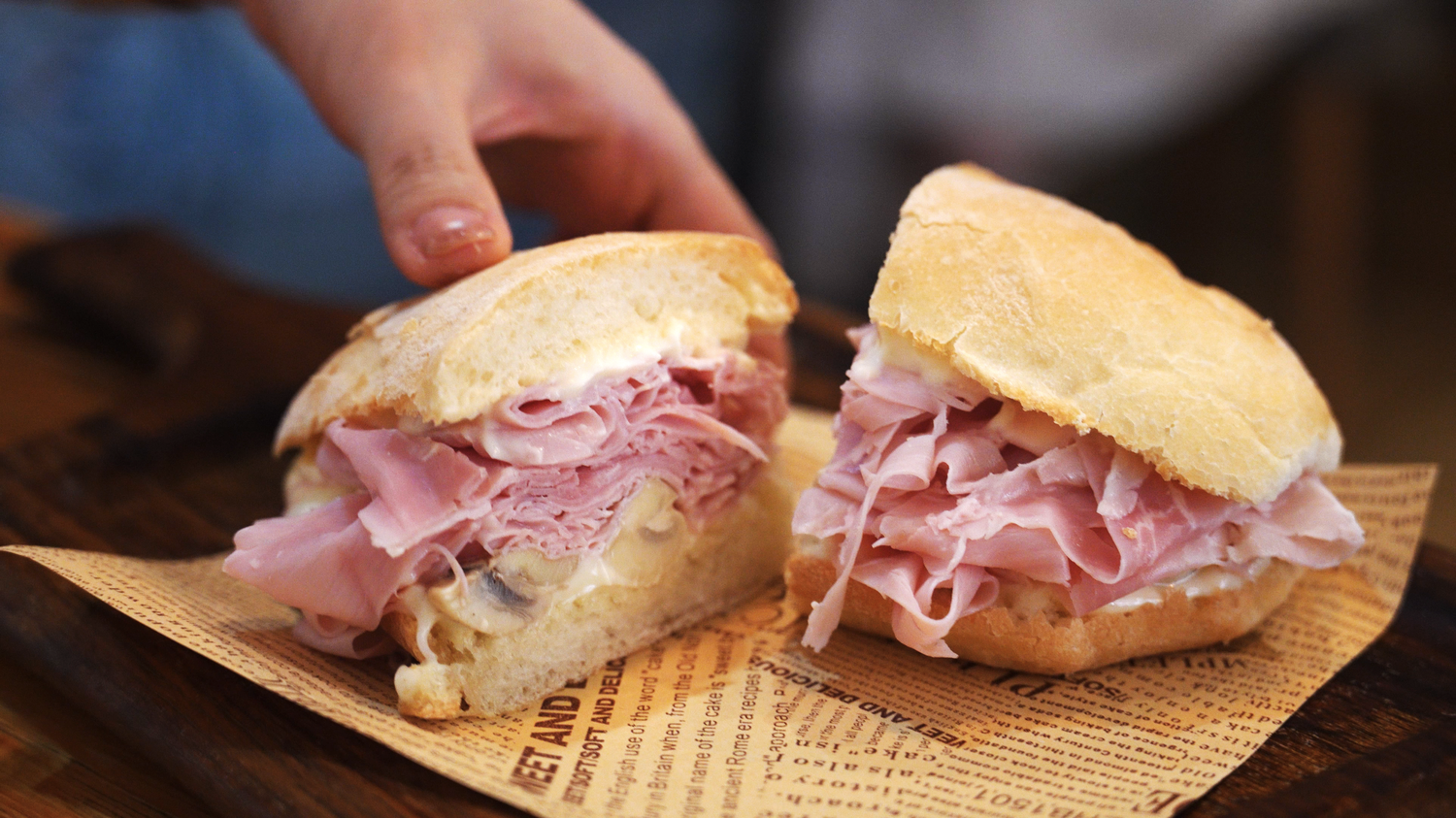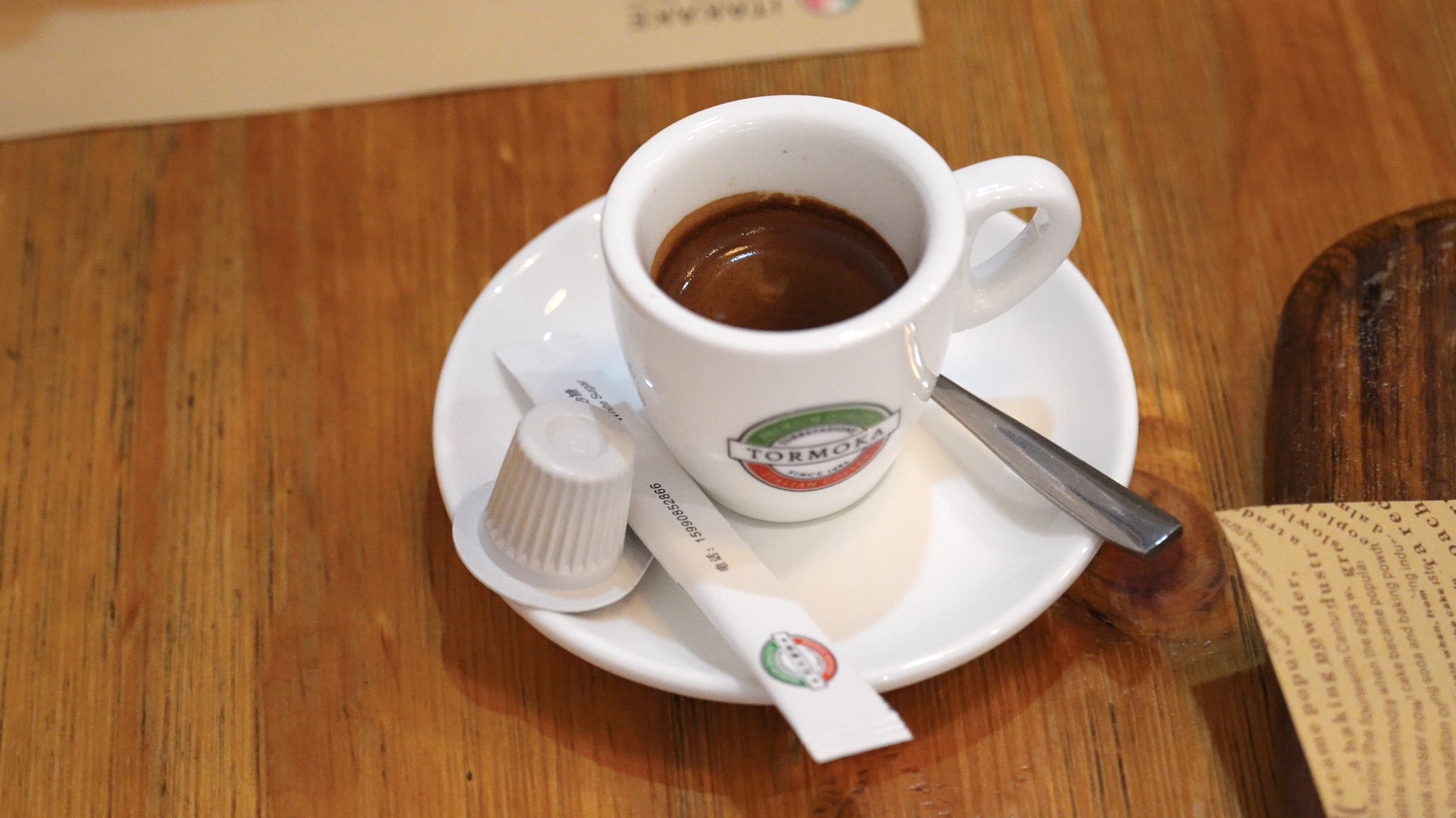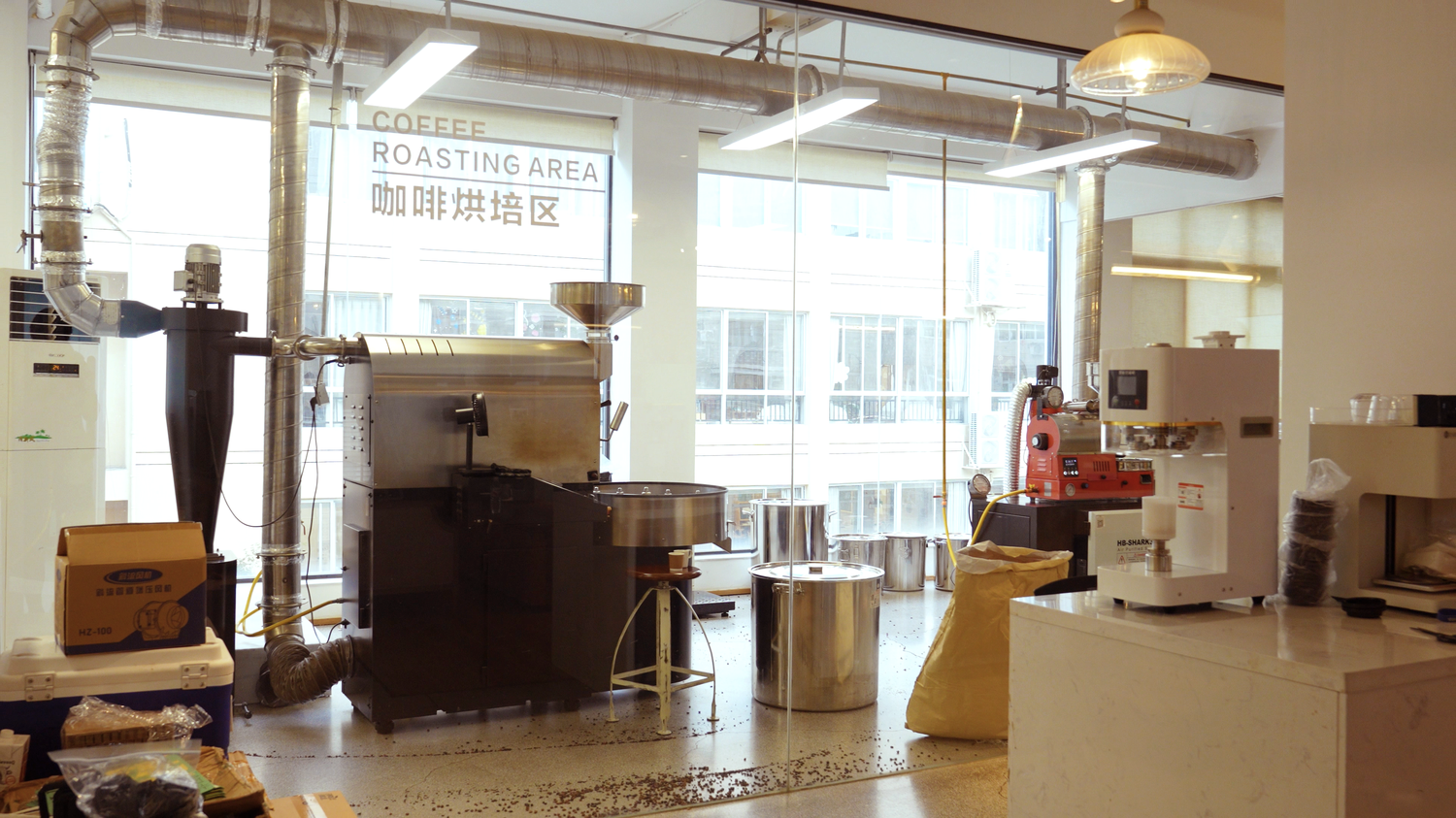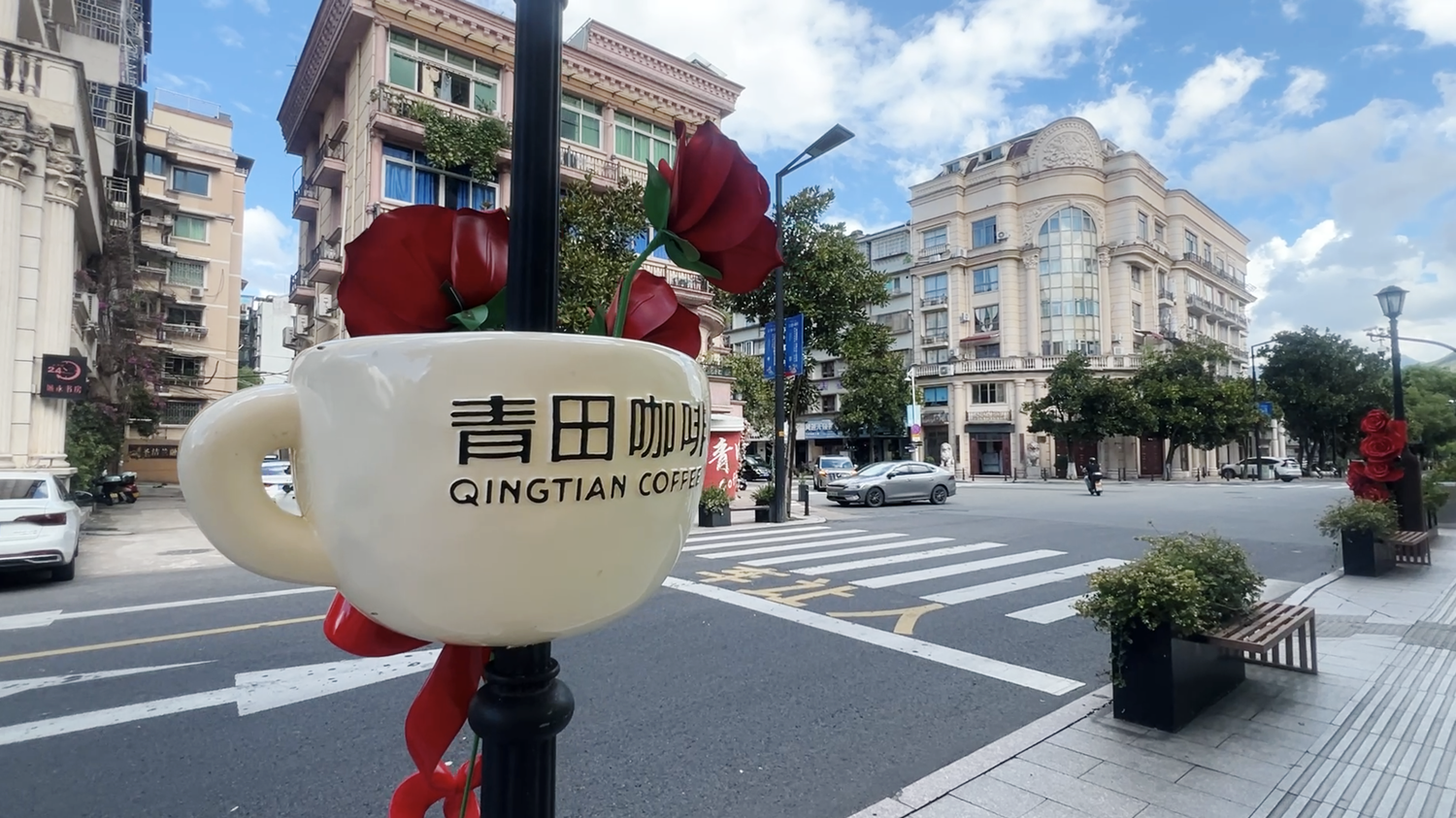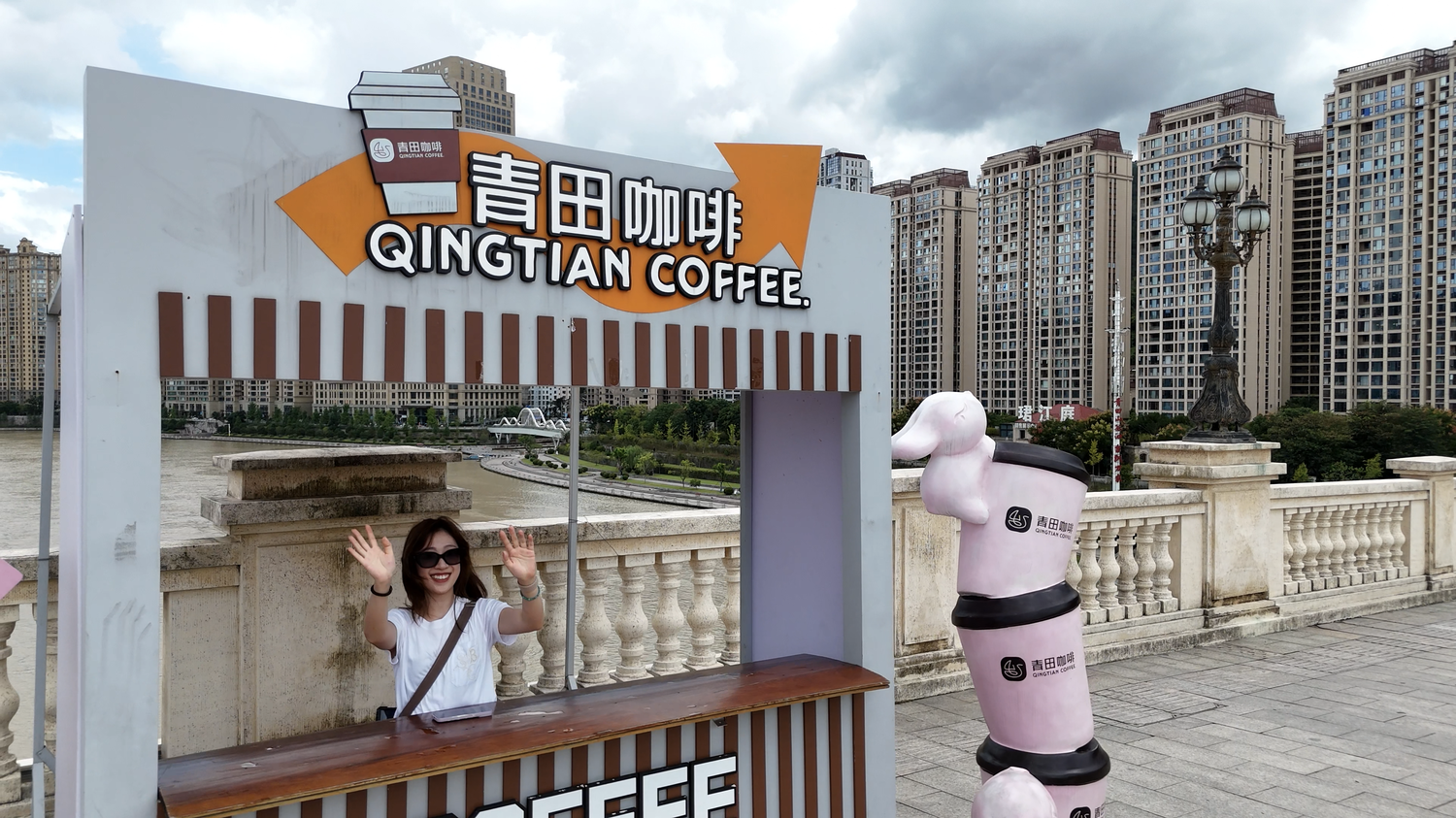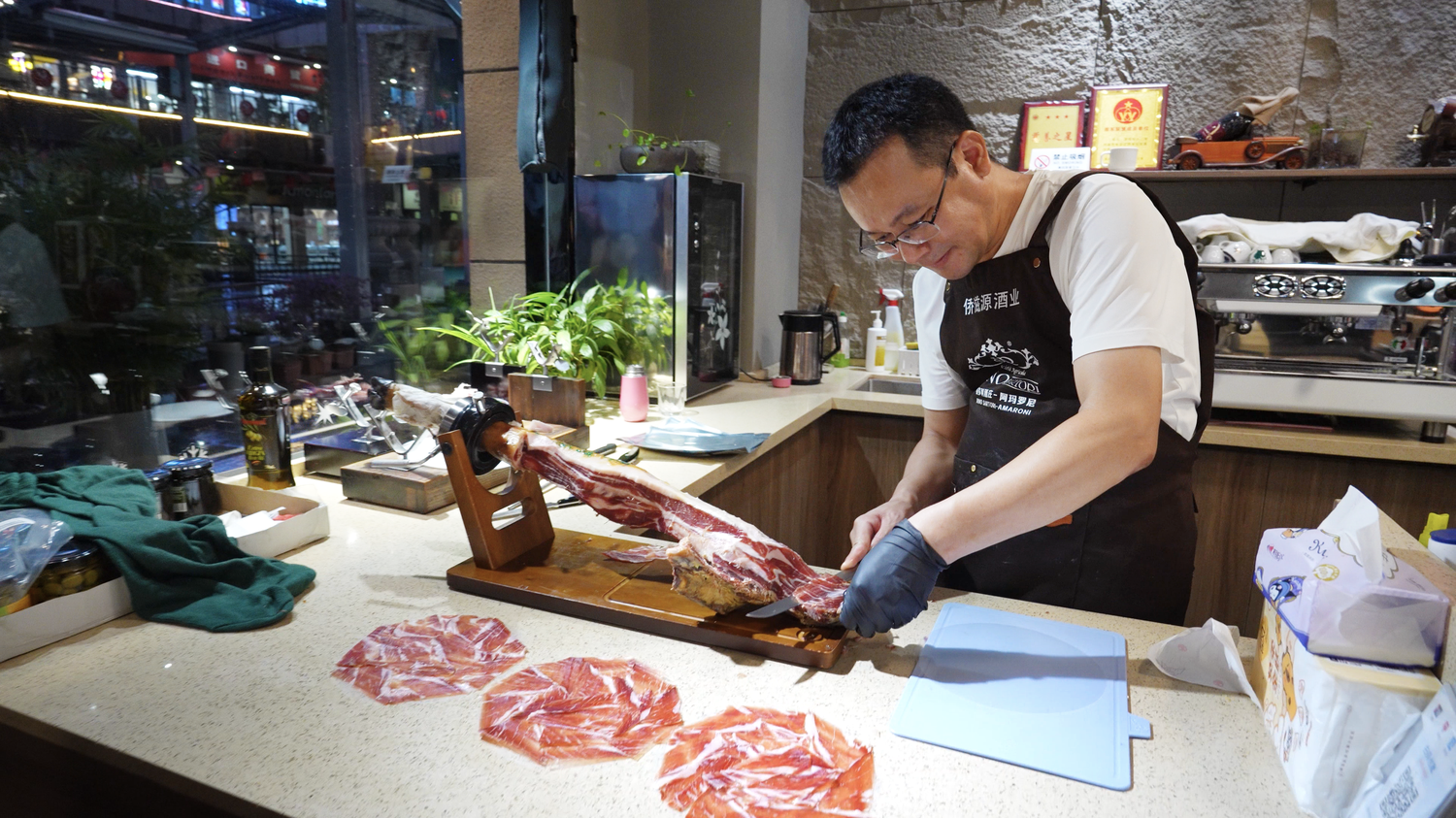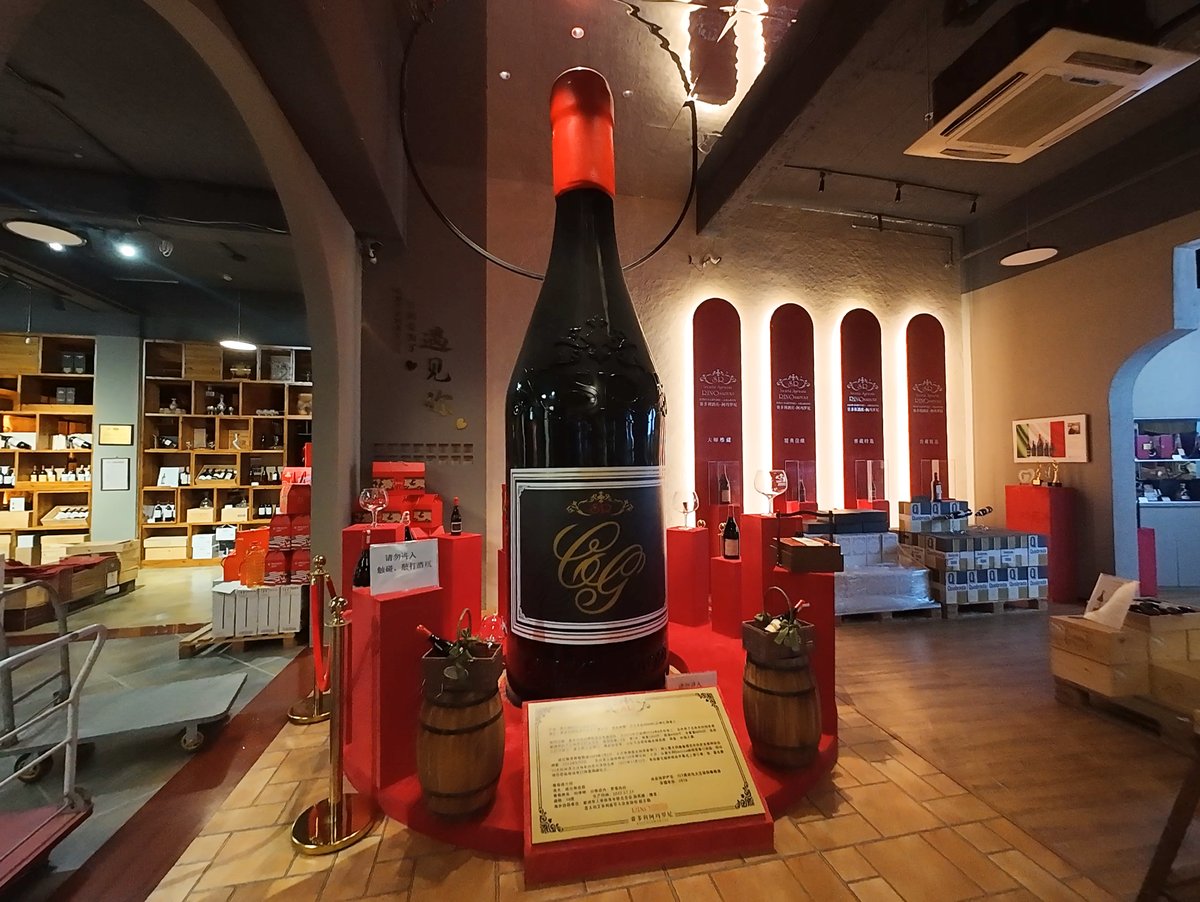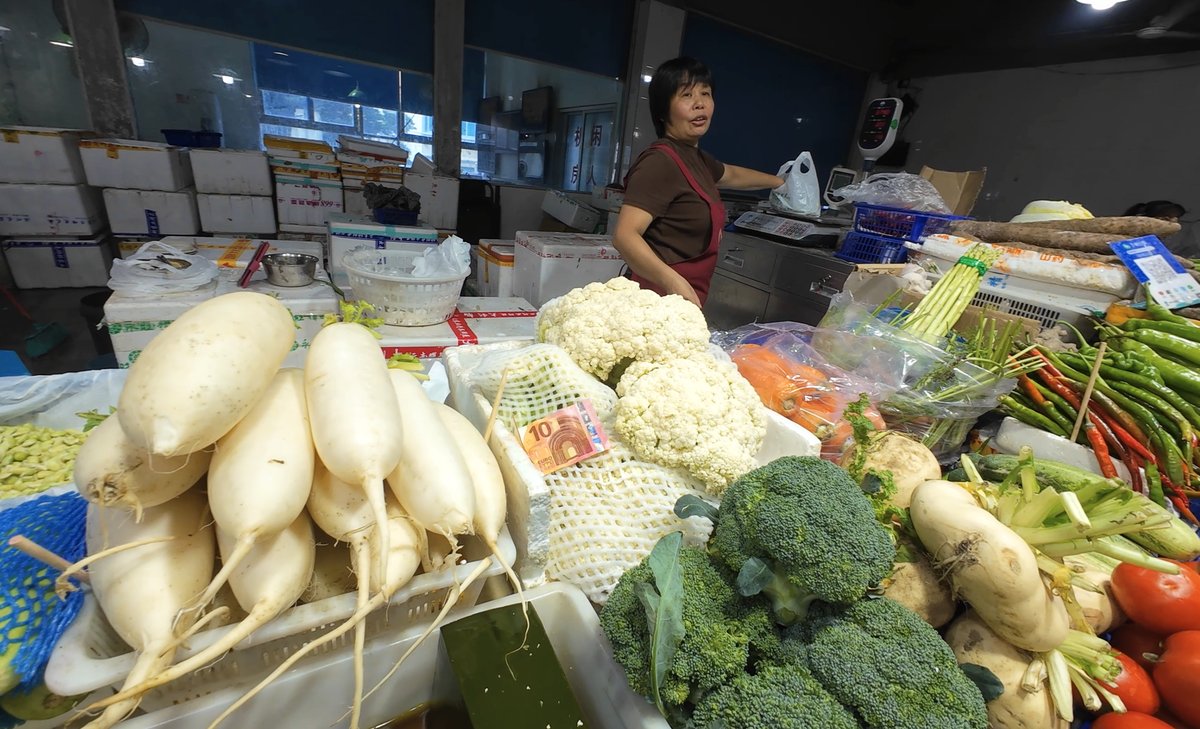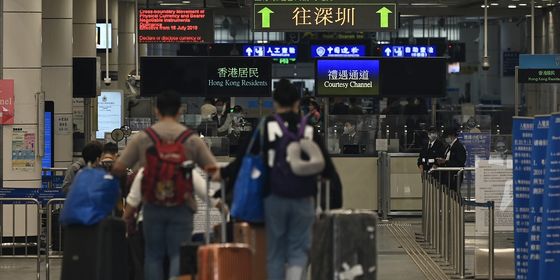Often celebrated online for its European flair as the hometown of countless Chinese diaspora, this small mountain town’s true essence lies in the lives of those who left, stayed, and returned—shaping it over generations
Among the visitors lured to Qingtian, a small mountainous town in the southern Zhejiang province, by the viral promise of “China’s most European county,” some feel scammed.
It is not for a lack of sights that flaunt the right feathers: within an hour of arriving this February, I had already soaked in the Baroque-esque carvings and Roman columns adorning the county library, a replica of Michelangelo’s “David” (but with his crotch demurely censored by two wutong, or Chinese parasol tree, leaves), and the omnipresent coffee shops—over 600 for a town of less than 600,000 residents, one per capita more than Shanghai—that infuse the town’s backstreets with a cozy aura.
According to travel blogs and the city’s tourism bureau, such flourishes stem from Qingtian’s huaqiao, or overseas diaspora—officially counted at about 381,000 and mostly residing in Europe—who have brought their lifestyles back to their once-destitute hometown. Of the nearly 300,000 documented Chinese living in Italy in 2024, Qingtianese account for almost a third.
But it’s also not hard to see why, after exhausting tips on the best camera angles for “pretending to be in Europe” on Xiaohongshu (RedNote) and taking reluctant sips of bitter espresso, some tourists quickly run out of steam. “Other than a few small [European-style] buildings you can count by one hand…the rest is just ordinary small county town architecture,” whines one traveler on Xiaohongshu, with some tourists and even locals agreeing in the comments.
In a country with countless European-inspired real estate projects named things like “Roman Holiday,” “Thames Town,” “Halstatt,” as well as at least two life-size Eiffel Tower replicas, Qingtian’s continental touches may seem unremarkable to some. But its charm lies more in its pulse—a rhythm shaped by generations of departure and return and the quiet melding of worlds carried back by those who once left in search of something more.
Read more about traveling in China:
- How a Small Chinese Village Is Welcoming Translators Worldwide
- Welcome to Liu York: Going with the Flow in China’s Chillest River City
- When Youth Tourism Meets Village Life in Altay, Xinjiang | Photo Story
“I don’t see myself moving back here permanently,” says a man in his 50s who introduces himself as Brother Liu. I’m strolling around the famous Qingtian Imported Commodity City, wondering how each wine shop manages to stand out among a dozen similar competitors, when Liu calls me over for tea. In the post-Chinese New Year lull, few visitors come by besides a cold wind. “This place is still poor,” says Liu, who left Qingtian in the early 1990s and is now back for a short visit from his home in Austria. He had just dropped in at the shop to see a friend.
His long explanation of how his life arrived at this point feels emblematic of many with roots in Qingtian. The owner of a Chinese restaurant in Austria that employs many Chinese migrant workers, Liu also runs an immigration consultancy, a study abroad agency, and a tour service, while posting daily ads on his WeChat Moments for European health supplements he can buy and bring back for a fee—a cocktail of hustles typical of an enterprising Qingtian merchant.
When Liu left for Europe, Qingtian was indeed a “poverty-stricken county.” According to a report by China Economic Times, county officials in the 90s had to repeatedly beg the provincial Department of Finance to provide salaries to local civil servants.
Traces of this difficult past are hard to spot in the city center today, or online, where Qingtian is often touted as the county with the highest average savings. The Overseas Chinese History Museum, hidden on the 11th floor of a local government building, offers one of the few glimpses left of Qingtian’s harder times. The museum has no official website, phone number, or listed hours—only an address on the review platform Dianping. When I ask a few nearby locals about it, they simply shrug and say, “Never heard of it.” After circling the building a couple more times, passing yet more Roman columns, I finally find an elevator to take me up.
Landlocked by “nine parts mountain, one part water, half part arable fields,” reads text printed on the museum’s wall, Qingtian migrants left this land for survival, dating as far back as the 18th century.
While the earliest Qingtian migrants documented were merchants peddling the county’s stone crafts to expositions as far as Europe and the Americas, a variety of faded documents and photos from the 20th century reveal a greater diversity in their trades. During World War I, they dug trenches in France wearing magua and skullcaps; in 1937, a man named Zhang Qingfang was issued a mechanics certificate by a Norwegian ship; in 1946, a Jin Guoyan cooked for British seamen; and a Wang Songcai hawked goods on a bicycle on a street in Milan, clad in a Western suit and leather shoes.
The museum sticks to a narrative familiar to official institutions of this kind in China: hardship, grit, success, and a triumphant, patriotic return. The story wraps neatly with Qingtian’s huaqiao giving back to causes related to health care, education, and culture in their hometown. The county has implemented numerous policies to welcome overseas Chinese capital back home. The Imported Commodity City, for example, is a brick-and-mortar example. In 2014, the county commerce bureau invested over 10 million yuan in establishing this commodity center, offering discounted rents and a menu of bonuses to entice huaqiao-run businesses to set up shop. The center now spans 90,000 square meters, housing 316 businesses importing goods from over 70 countries, with a purported accumulated revenue of 17 billion yuan as of 2024, according to Xinhua.
Outside the center, examples of goods brought back spill over into the streets. Whole legs of ham line shop windows, some still spotlit past business hours; a nearby bike lane is stenciled with the stages of wine making in English: “harvest,” “destemming,” “crushing,” ...; on the in-development southwestern riverbank, a two-story store called “Qingtian Coffee Window” combines a café, coffee-making experiences, and a mini-museum showcasing the history of coffee, both local and worldwide. In recent years, the local government has established the “Qingtian Coffee Association” to promote the industry and launched the “Bring Coffee into Government Offices” initiative, supplying machines and beans to local civil servants during work hours.
The local government takes pride in the idea that, in this small town, one can “sip on authentic Italian espressos, taste fresh arrivals of New Zealand beef, or sample rare wines that have spent years in a French countryside cellar,” reads a statement on its website—indulgences usually associated with big-city, class-coded luxury.
Back in the old town, a few aunties sit on stools, looking on gingerly in front of a Bank of China branch. Noticing my gaze, one lifts her chin and asks, “Got euros?” Declining, she looks at my attempts at furthering the conversation with suspicion. A few meters away, another woman counts a wad of euros after a successful trade.
“You really can use euros in the wet market…or some clothing shops,” Chen Zhengye, a Qingtian native and owner of the local Sweet Dog Café, tells my TWOC colleagues during their visit in September, echoing a common online trope about Qingtian. But she stresses that there’s more nuance to the story: “Only the huaqiao use it. For us locals, who have any use for euros?”
The divide between the huaqiao who only come back for short visits and those who stayed behind seems to run deeper than the currencies they use. For all its European façades and overseas flair, Qingtian remains a small Chinese county underneath, grappling with the same challenges as countless others: an aging population, scarce good-paying jobs for the young, “left-behind” children growing up in the care of their grandparents, and a generation that can neither afford nor see the point in buying a home.
“[The riverside apartments] go for as much as three to five million yuan,” says Chen, referring to the high-rises along the Oujiang River that cuts through the heart of the county, mostly bought up by the early huaqiao for investment. “But my staff, for example, make only about 3,000 yuan a month…and living costs here aren’t exactly low.”
As a result, many Qingtianese continue to migrate today. On a bulletin board plastered with apartment ads in a busy part of town, one states: “Entire pizza business for transfer. The owner is moving abroad. Price negotiable.” And in faint scribbles: “Free training included.”
“In an economic downturn, young people here who run out of means have only one path: emigrate,” says Chen. “They can earn around 1,500 euros a month out there.”
Some users on Xiaohongshu even joke that “the rite of passage for a Qingtian youngster is exile,” and only those who do well in school can stay in China.
“I didn’t even know I had a choice,” writes Lin Xinyan, who moved to Portugal in seventh grade, on Xiaohongshu under the handle “Strange Potato.” Her mother had migrated a few years before, while her dad stayed behind with her. She can still recall her teachers suddenly cutting her slack after scoring just 36 out of 100 on an English test in the lead-up to her departure, and how a 50 yuan bill her father gave her made her feel rich, especially since a cup of meatballs only cost 1.5 yuan then. She promptly spent it on farewell barbecue skewers for her friends and a memory book for them to sign. Fifteen years later, and a recent master’s graduate in Portugal, she still has that book filled with her classmates’ messages.
Chen, the coffee shop owner, remembers how over half of her classmates growing up were “left behind,” living with grandparents or relatives while their parents worked abroad. Many of them left over the years to join their families, including her childhood best friend, who departed 10 years ago and has never returned.
In Brother Liu’s experience, those who wanted to leave Qingtian have already left. In the immigration agency he runs, he primarily works with clients from Henan province, rather than those from his hometown. For those who stay, “It’s not that they are lazy,” Liu says. “Someone needs to stay home to look after the elders.” His mother still lives in Qingtian, but all four of his sisters work abroad in different countries.
Back at Liu’s friend’s shop, he introduces me to the owner, a woman he calls “Saozi,” or “sister-in-law.” She seems unbothered by the slow business as she pours me another cup of tea, with two carved koi carp swimming on the bottom of the pale green porcelain. “Cassia seed tea. It’s good for your eyes,” she says. “I can’t get used to coffee.”
Saozi has a daughter who goes to elementary school in town. Her husband works abroad and has been asking her to join him. But despite her husband’s constant beckoning with beautiful pictures of where he lives, Saozi remains unmoved. “Not even for traveling,” she says, seemingly harboring no regret in her decision. “I just prefer peace and stillness.” Between the shop, which she claims draws crowds during the summer, and her husband’s business abroad, they manage a decent life.
Chen has also chosen to stay in town for a steady and comfortable life. Outside peak seasons—summer, Christmas, Chinese New Year when the huaqiao return, and domestic holidays like Labor Day and National Day—her café is quiet, and she spends her days with her two dogs, a 9-year-old cat, and regulars from nearby schools, banks, and government offices
She was offered the opportunity to join her aunts in Spain when she was in elementary school. “I thought learning a new language was hard…and I’m a picky eater,” she explains as to why she didn’t go. She adds that the journey to the West seems a lonely quest, and she finds that her friends and family, who return for holidays after a few years, are “out of sync with how things work here.” She doesn’t see them moving back permanently, even to spend their senior years.
“If they come back, they’ll find the place changed beyond recognition. They won’t even find their childhood home. Qingtian has changed a lot over the past few decades,” she says, reflecting the rapid urbanization of numerous small counties in China.
On the town’s western edge, the old buildings made of gray brick, black tiles, and adorned by tangled electric wires are making way for new developments. Yet life retains its familiar rhythms. In front of vacated storefronts with peeling signs and heaps of architectural debris, older residents set up makeshift stalls—a crate of five radishes here, a few nondescript fabric bags there—or sit in the winter sun, chatting the day away.
Back in the crowded part of town, I catch a warm, savory whiff of pork and dry-fermented vegetables. An offering of stuffed bing, or flatbread, roasting inside a cylindrical wooden oven draws in a line of customers. I remember seeing a video of this exact shop on an Instagram account called “Qingtian Hometown,” hands shown busily stacking a pile of them alongside a caption reading: “...an overseas Chinese bought 80 of them before leaving the country.”
If not for the roast beef piadina still stretching my belly—made at a decade-old Italian restaurant founded by a pair of huaqiao siblings upon their return from Italy—I would’ve tried one too. Perhaps, just perhaps, it would have taken me a little closer to the “true” Qingtian experience.
Additional reporting by Hayley Zhao and Jiayu Zhang
